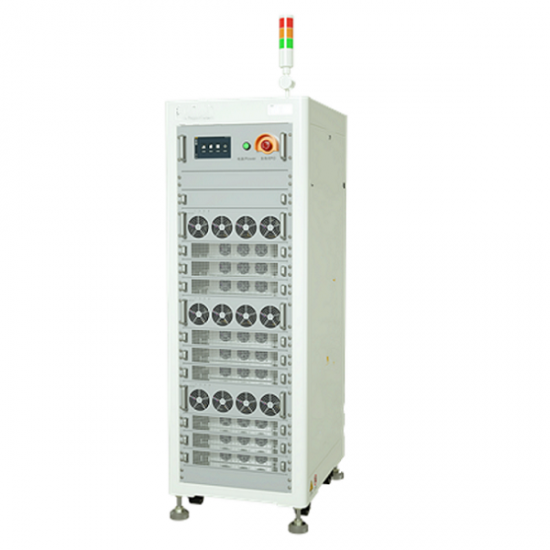Lith Corporation, founded in 1998 by a group of material science doctor from Tsinghua University, has now become the leading manufacturer of battery lab&production equipment. Lith Corporation have production factories in shenzhen and xiamen of China.This allows for the possibility of providing high quality and low-cost precision machines for lab&production equipment,including: roller press, film coater,mixer, high-temperature furnace, glove box,and complete set of equipment for research of rechargeable battery materials. Simple to operate, low cost and commitment to our customers is our priority.
What is an EV Car Battery Manufacturing Line?
An EV (Electric Vehicle) Car Battery Manufacturing Line refers to the complete system of processes, equipment, and automation technologies used to produce lithiumion battery cells and packs specifically for electric vehicles. This manufacturing line spans from the raw material stage all the way to the final vehicleready battery pack, integrating advanced production techniques, quality control systems, and logistics management.
The battery is the core component of any electric vehicle, determining its performance, range, safety, and cost. Therefore, the manufacturing line must ensure:
High energy density
Long cycle life
Fast charging capability
Thermal stability and safety
Costeffective mass production
EV batteries are typically based on lithiumion chemistry, with variations such as:
LiFePO₄ (Lithium Iron Phosphate) – known for high safety and long life
NMC (Nickel Manganese Cobalt) – offers high energy density
NCA (Nickel Cobalt Aluminum) – used by Tesla for highperformance applications
These chemistries can be manufactured in different cell formats, including:
Cylindrical cells (e.g., 2170, 4680)
Pouch cells
Prismatic cells
Each format requires a slightly different approach in terms of cell design and manufacturing process.
Key Stages in an EV Car Battery Manufacturing Line
A full EV car battery manufacturing line includes two major segments:
1. Cell Production (Cell Manufacturing Line)
This stage involves producing individual lithiumion battery cells from raw materials.
2. Module and Pack Assembly (Battery Pack Line)
In this stage, multiple cells are grouped into modules, which are then integrated into a complete battery pack for installation in the vehicle.
Let’s explore both stages in detail.
1. Cell Production (Cell Manufacturing Line)
This part of the line focuses on producing the individual battery cells that will later be assembled into modules and packs.
a. Electrode Manufacturing
# i. Slurry Preparation
Cathode: Mixes active material (e.g., NMC, LiFePO₄), conductive additive, and binder.
Anode: Combines graphite, binder, and solvent.
Done using highshear mixers or planetary mixers.
# ii. Coating
The slurry is applied onto current collectors:
Aluminum foil for cathodes
Copper foil for anodes
Slotdie coating is the most common method.
# iii. Drying & Calendering
Electrodes are dried in large ovens to remove solvents.
Calendering adjusts electrode thickness and density.
# iv. Slitting
Electrodes are cut into strips matching the cell design.
b. Electrode Stacking or Winding
Depending on the cell type:
Stacked electrodes – used for prismatic and pouch cells
Wound jellyroll – used for cylindrical cells
Precision stacking or winding ensures uniform electrochemical performance.
c. Cell Assembly
# i. Casing Insertion
For prismatic and pouch cells: the electrode stack is inserted into an aluminum or laminate casing.
For cylindrical cells: the wound electrode is placed into a steel can.
# ii. Tab Welding
Laser welding connects electrode tabs to the cell terminals.
# iii. Electrolyte Filling
Cells are filled with electrolyte (typically LiPF₆ dissolved in organic solvents).
Must be done in a dry room environment (dew point < 40°C).
# iv. Sealing
Hermetically sealed using laser welding (prismatic/cylindrical) or heat sealing (pouch).
d. Formation and Aging
# i. Formation
Initial charge/discharge cycle to activate the cell and form the SEI layer on the anode.
# ii. Aging
Cells are stored under controlled conditions to stabilize internal chemistry and allow gas evolution.
e. Testing and Sorting
Voltage, internal resistance, and capacity testing
Cells are sorted into bins based on performance characteristics
Ensures consistency when assembling modules
EV Car Grading Machine
2. Module and Pack Assembly (Battery Pack Line)
Once the cells are produced and tested, they are assembled into modules, and then integrated into a complete battery pack for use in the vehicle.
a. Cell Inspection and Handling
Incoming cells are inspected for voltage, capacity, and physical integrity
Sorted to match similar performance levels
Cleaned and prepared for module assembly
b. Module Assembly
# i. Cell Stacking and Fixturing
Cells are arranged in predefined configurations (e.g., sidebyside, vertical stacking)
Held in place with fixtures or frames
# ii. Busbar Welding
Electrical connections between cells using copper or aluminum busbars
Typically done via laser welding for precision and reliability
# iii. TIM Application
Thermal Interface Material (TIM) is applied between cells and cooling plates to enhance heat dissipation
# iv. Housing Installation
Modules are enclosed in protective trays or housings
Includes mounting hardware and structural supports
c. Pack Integration
# i. Module Insertion
Multiple modules are placed into the battery enclosure or chassis
# ii. BMS Integration
The Battery Management System (BMS) is installed and connected
Monitors voltage, temperature, and state of charge for each module
# iii. Cooling System Installation
Liquid cooling plates or air ducts are installed to regulate battery temperature
Includes coolant lines, pumps, and thermal sensors
# iv. Wiring and Harness Connection
Highvoltage cables, sensors, and connectors are routed and secured
CAN communication lines connect the BMS to the vehicle controller
# v. Final Sealing
The battery enclosure is closed and sealed
Leak testing is performed for liquidcooled packs
Final Testing and Validation
Before being shipped or installed in the vehicle, the battery pack undergoes rigorous testing to ensure performance and safety.
Tests Conducted:
Electrical Performance Testing: Voltage balance, insulation resistance
Functional Testing: Communication with vehicle ECU, BMS calibration
Thermal Testing: Heat distribution and cooling efficiency
Safety Testing: Overcurrent, short circuit, and thermal runaway protection
Environmental Aging: Exposure to simulated realworld conditions (vibration, extreme temperatures)
Supporting Systems in an EV Battery Manufacturing Line
To ensure highquality output and efficient operations, several supporting systems are integrated throughout the production line:
1. MES (Manufacturing Execution System)
Tracks every step of the manufacturing process
Ensures full traceability from raw materials to finished pack
Integrates with ERP systems for inventory and scheduling
2. Clean Room and Dry Room Environments
Critical during electrode coating, electrolyte filling, and cell sealing
Maintains low humidity (<1% RH) and particulatefree air
3. Fire Suppression and Safety Systems
Due to the flammable nature of lithiumion batteries
Includes gas suppression systems, fire detection sensors, and explosionproof enclosures
4. Automated Guided Vehicles (AGVs)
Transport materials and subassemblies between workstations
Reduces manual labor and improves workflow efficiency
Automation Levels in EV Battery Manufacturing Lines
Depending on the scale and investment level, automation can vary:
1. Manual Production
Suitable for R&D, prototyping, or smallscale production
Laborintensive, limited repeatability
2. SemiAutomatic Production
Combines automated key steps (welding, testing) with manual handling
Offers flexibility and costefficiency
Ideal for midvolume production or custom applications
3. Fully Automatic Production
Highspeed, robotdriven systems with AI vision and realtime data tracking
Found in largescale EV manufacturing plants (e.g., Tesla Gigafactories, CATL, BYD)
High initial investment but offers excellent repeatability, traceability, and throughput
Design Considerations for an EV Battery Manufacturing Line
When setting up or optimizing your EV battery manufacturing line, consider the following factors:
Cell Chemistry and Format – NMC, LiFePO₄, NCA; cylindrical, pouch, prismatic
Production Volume – Match layout and throughput to daily/hourly output targets
Vehicle Platform Compatibility – Ensure the line supports current and future models
Level of Automation Required – Manual, semiauto, or full auto?
Space and Layout Planning – Optimize material flow and minimize bottlenecks
Integration with BMS and Cooling Systems – Seamless communication and mechanical fit
Traceability and MES Integration – Essential for quality assurance and recalls
Safety Features – Fire suppression, emergency stops, explosionproof design
Benefits of a Modern EV Battery Manufacturing Line
Enables highvolume, repeatable production of safe and reliable battery packs
Supports both lowvolume customization and mass production
Reduces failure risks through automated quality checks
Improves product consistency and reduces labor costs
Facilitates realtime monitoring and datadriven optimization
Complies with global automotive safety standards such as ISO 26262, IEC 62660, UN38.3
Leading Companies Providing EV Battery Manufacturing Line Equipment
Several global companies offer turnkey solutions or key components for EV battery manufacturing lines:
KUKA Systems – Advanced robotic automation for battery assembly
B&R Industrial Automation (ABB) – Integrated automation platforms
Gree EnergyTech – Complete module and pack line solutions
Hanson Robotics – Smart battery manufacturing systems
Hyundai WIA – Specialized automotive battery equipment
Trumpf, Coherent, IPG Photonics – Laser welding and sealing equipment
CATL, BYD, Panasonic, LG Energy Solution – Inhouse developed production systems
Need Help Setting Up or Optimizing Your EV Battery Manufacturing Line?
If you're looking to design, build, or optimize your EV battery manufacturing line, I can help you with:
Process Flow Design – From raw materials to final pack testing
Factory Layout Planning – Space optimization and workflow analysis
Automation Strategy – Selecting the right level of automation for your needs
Equipment Selection – Recommending bestinclass machinery and suppliers
Cost Estimation – Budget planning based on production volume and complexity
Customization Support – Adapting the line to your specific vehicle platform
All you need to do is provide the following information:
Cell chemistry and format (LiFePO₄, NMC, cylindrical, pouch, prismatic)
Desired production volume per day/month
Level of automation required (manual/semiauto/fullauto)
Target vehicle types (passenger cars, buses, trucks, etc.)
Current factory space and infrastructure details




 Online service
Online service
